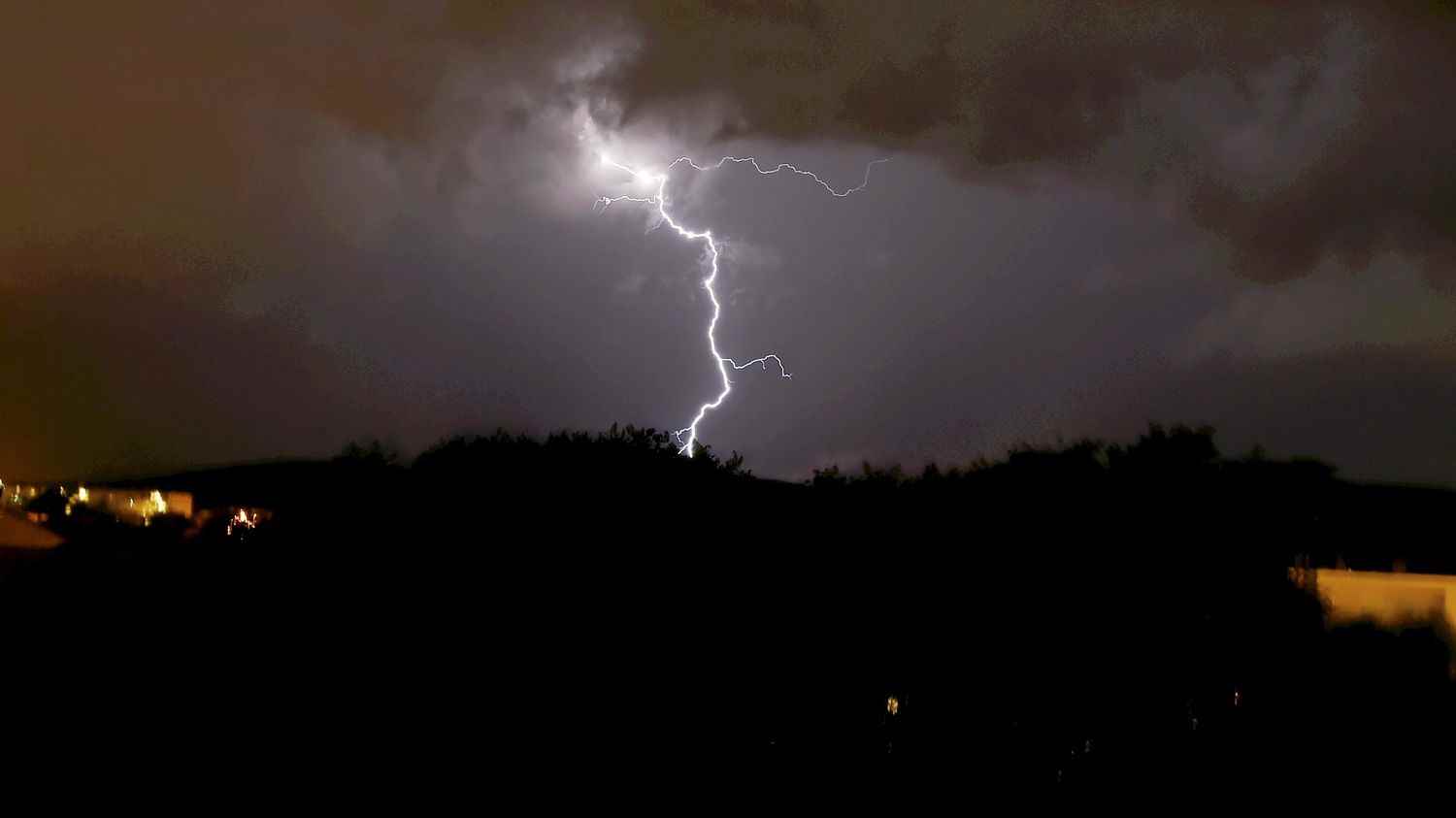The damage remains minor, despite the great scare. After violent storms, the Gard wakes up with its feet in the water. The department was thus again placed, in the middle of the night from Tuesday to Wednesday, September 7, in red alert rain flood. Météo France had already placed the cursor in red on Tuesday afternoon, before putting the Gard back in “orange” at 7 p.m. But new very intense storms, with lightning strikes, hit the department after midnight… So why wait until two in the morning to trigger the red alert?
>> Thunderstorms: heavy rain fell on Nîmes, but without causing major damage
In Nîmes, 130 mm of rain fell in two hours. The firefighters have not found any major damage for the time being: three people were however slightly injured in the Gard, on the night of Tuesday to Wednesday, according to the firefighters of the department. They were taken care of after the collapse of a ceiling: 15 people were brought to safety, motorists trapped in their car. The device planned for this Wednesday, September 7 includes 400 firefighters including 84 flood specialists, 15 officers reinforce the command on the ground.
Everything happened in three stages: in the afternoon of Tuesday, violent stationary thunderstorms formed above the Gard. Météo France then launched the first “red vigilance”. Red thunderstorm vigilance is activated in the event of “very violent storms, likely to locally cause very significant damage”especially “on dwellings, parks, crops and plantations”says the institute. The populations are then invited to stay at home, in a permanent building, and not to use their vehicle.
Then, a new act, at the start of the evening, these violent storms evacuated towards the sea. It is therefore a return to orange vigilance for the department. However, the Mediterranean Sea is currently very warm: in the aftermath, new storm clouds quickly formed above the sea, before returning in force towards the coasts. Hence the establishment around two o’clock in the morning of the second red vigilance.
A #thunderstorm violent quasi-stationary affects the city of #Nimes where there are many floods in the low points of the city. Be vigilant and stay informed at https://t.co/KA0Ij27Eea pic.twitter.com/LSBbJU21WE
— VigiMeteoFrance (@VigiMeteoFrance) September 6, 2022
For Météo France, this phenomenon is impossible to anticipate, explains Tristan Hamm, one of its forecasters: “Thunderstorms are already very difficult phenomena to predict, so you can imagine that stationary thunderstorms are even more so, he explains. It was by observing that the storms were beginning to be stationary that the red vigilance was triggered. The orange vigilance put in place previously was also quite sufficient for the risk of thunderstorms.
>> Sheltering under a tree, wearing plastic soles or not answering the phone… We checked five misconceptions about thunderstorms
Météo France takes into account several criteria to decide on the level of vigilance. In particular human criteria: around two o’clock in the morning, the majority of people were sleeping at home, there was little risk that they would find themselves trapped in the middle of the street. It is therefore above all the violence of the storms that has been taken into account.
11 deposits in #vigilanceOrange
Stay informed at https://t.co/rJ24zzmmy4 pic.twitter.com/lrEZudT2RU
— VigiMeteoFrance (@VigiMeteoFrance) September 7, 2022
Wednesday morning, the Gard, like the two neighboring departments of Hérault and Vaucluse, remain on orange alert, both for rains and floods and for thunderstorms. “In view of new precipitation expected in the coming hours (…) we ask to respect all safety instructions, to avoid unnecessary travel“, ask the firefighters to the population.
